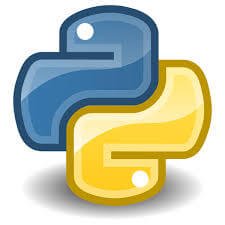Whether you are an IT professional looking to land a better-paid job or a student looking to step into the IT field, getting the right certification from a reputed institute can help you stand out from the crowd. If you’re not convinced why you need a certification, consider a few facts:
- According to 92% of employers, IT certifications help to ascertain the reliability of IT employees
- For 91% of hiring managers, certifications act as an important element in their hiring criteria
- According to 92% of employers, higher salaries are given to IT certified individuals
- 80% of HR executives verify certifications among job candidates
Perhaps these figures explain why there’s a mad rush among candidates to get certified despite rising certification costs. If you’ve your eyes set on entering the field of data science, you can consider earning a Python certification.
Guido van Possum – a Dutch programmer, developed Python in 1980s. You can use this object-oriented and open-source programming language for an extensive range of applications such as developing, scripting, and testing. Thanks to Python’s simplicity and elegance, top technology organizations like Google, Dropbox, IBM, Quora, Cisco, Hewlett-Packard, Mozilla, Qualcomm etc have implemented it. Before we take a look at the rising certification costs of Python, let’s try to understand what makes this programming language the most preferred choice of a majority these days.
It’s easy to learn and efficient

Python is extremely simple and easy to learn – thanks to its close resemblance to the English language. When compared to some other programming languages like C++ or Java, its learning curve is shorter. What’s more, you can accomplish a lot with it by often using fewer lines of code than other programming languages, say Java.
Though some critics may say Python’s execution speed to be somewhat problematic, its benefits far outweigh performance concerns, if any. Additionally, there are many libraries, packages, and modules for Python, which can make lives of those learning or using Python easier.
For example, instead of writing complex and lengthy loops to parse and find patterns in text, you just need to import the regular expressions module, which will help you to get the job done with very little code. Beautiful Soup – a Python library that many use for web scraping to parse data from XML and HTML files, is another example of how user-friendly Python is.
Even as a beginner, you can quickly learn to automate tasks like handling excel spreadsheets and PDFs, working with files etc with Python. In case you are interested in the field of data science, you may even dive into data analysis, data visualization, machine learning, Django, and much more after you’ve got the basics of Python right.
It’s backed by an active and large community

Python programming language has a large, active, and thriving global community of millions of software developers. These professionals interact with each other online and offline via numerous virtual and physical locations and help guide the community with global, regional, and local events. Thanks to this large community, you’ll find more than a lakh projects existing in the Python Package Index (PyPI), which would help serve almost all kinds of requirements.
You can consider the PyPI repository similar to your hardware store, where you go to find the requisite tools for finishing a project. This tremendous support is another reason why learning Python features on the top of the list of many IT professionals and even students.
Python is the trendiest programming language

Thanks to the rising interest in AI (artificial intelligence) and data science, professionals having the relevant qualifications, certifications, and skills are in high demand. You can get an idea of how big the future with these technologies will be by considering what IBM predicted – by 2020, the demand for data scientists will rise by 28%.
While data scientist has been ranked by Glassdoor in 2018 as the number one best job in the US, artificial intelligence is flaunted as the future of technology. For machine learning (ML) professionals and data scientists, Python is emerging as the preferred choice. That’s because it comes with a robust and rich set of libraries, such as Pandas for cleaning, manipulating, transforming, and analyzing data, NumPy for ML and data science, TensorFlow for machine learning, scikit-learn for machine learning, Keras (a user-friendly, high-level neural network library) for deep learning, and several others.
Thanks to such vast and useful resources that make learning and programming with Python easier, a growing number of people are opting to learn Python and hone their skills in the programming language in case they already have the working knowledge of it.
To understand the reason behind the rising cost of Python certification, you’ll also need to know what’s driving the huge demand for Python certified professionals. Let’s try to decode the reason.
Python had been a hidden gem in the domain of IT

Despite being in existence since the late 80s, Python wasn’t noticed for decades, perhaps because it wasn’t marketed properly. Additionally, there were some problems with its fundamental concept, which acted as a hindrance in this programming language becoming popular.
The scenario changed when Google brought this language to the forefront in the 21st century and made some necessary alterations on its core logic setup and configuration. Following those changes, Python gained enhanced power and performance. It even deleted fully repeated methods and modules from its standard library to make it lighter, faster, and smoother.
At present, Python’s performance is two to three times of what it was during its initial days. All these factors have contributed to making it one of the most influential programming languages in the technical industry. No wonder why it has gained a huge popularity among tech developers and experts.
Python lets developers build applications in different domains

You’ll find several similar features between Python and traditional programming languages such as C++ and Java because the former Python was inspired by these languages. Just like Java, Python too has the capability of setting up any type of application. That means a Python developer is capable of building desktop software, web application, smartphone games, and hardware programs.
The beauty of Python lies in the fact that it doesn’t bind the skills of Python programmers to any particular domain. Thus, it allows these professionals to build any type of applications irrespective of platform, domain, and device.
Python is famous for its quality and reliability

Python is celebrated for its efficiency, reliability, and speed. You can not only project the Python applications under any setting, but even enjoy remarkable performance there. Additionally, it’s considered as the safest programming language.
Python comes equipped with the capability of creating enterprise-standard, extremely secure application using the support of 128-bit encryption technology. What’s more, in Python applications, you can even implement multi-tier security features.
Why Python certification costs are rising fast

Now that you know why there’s a trend of getting Python certifications from reputed institutes, and what drives this rush to become an expert in this programming language, you can understand why Python certification costs are rising steadily. After all, a reputed and reliable Python certification training curriculum would help you master the relevant concepts and gain thorough experience on writing Python code and packages such as scikit-learn, Matplotlib, Pandas, NumPy, SciPy etc. You’ll also learn how to use lambda functions and web scraping libraries, writing Python code for Big Data systems like Spark and Hadoop etc.
Examining and analyzing case studies and working on real-world projects to get hands-on experience via online Python lab would be some other activities that your Python certification is likely to include. When you’ll learn all these fast, it would surely come with an associated cost. Yet, if you compare such certification costs to comparable full-time courses, the former would be a fraction of what the latter would have cost you.
When searching for Python certification, you will find various choices offered by online portals and even reputed companies like IBM etc. It’s obvious that courses offered by reputed institutes or portals, or those having industry stalwarts and experienced professionals as your instructors would cost more than the ones that are hurriedly put together without much to boast about.
So, when short-listing institutes or online learning platforms offering Python certification, you shouldn’t be guided by the certification costs alone. It’s true that you should consider the cost and select one that suits your budget but while doing so, make sure not to compromise with the course quality on offer. After all, what use will it be to save some money if your ultimate goals of achieving the requisite knowledge of Python to make a career leap or bag that coveted job remains unfulfilled just because the curriculum was lackluster or wasn’t supported well by the teachers involved or resources?
Final words

It’s true that Python certification costs are rising. But it’s equally true that if you invest in a quality course, you’ll be able to get returns that worth a few times the certification costs that you would have borne.
To learn more about Python, click here and read our another article.



